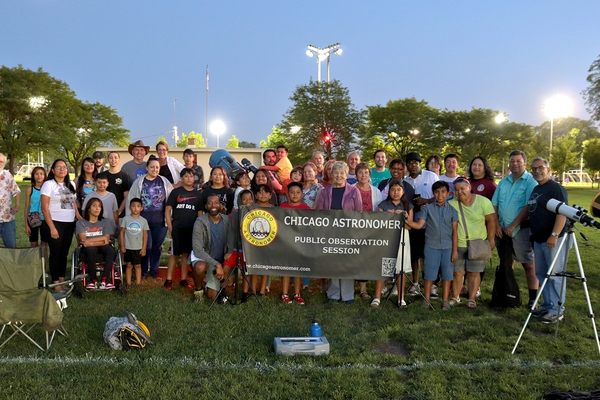The ‘Strawberry Moon Solstice’ is A Big Misunderstanding
It’s getting a lot of press, but is not actually that rare.

Overnight summer solstice festivities at Stonehenge. (Photo: Mike Norton/CC-BY-2.0)
You may have noticed news outlets reporting that this year’s summer solstice is especially unique, hosting a rare confluence of astronomical phenomena. For the first time in nearly 50 (or is it over 70?) years, the summer solstice and June full moon — colloquially known as the “Strawberry Moon” — are falling on the same day. It’s extremely rare, as multiple news outlets will tell you, having last occurred in 1967 (or was it 1948?).
The story is one of those neat little scientific facts that you can proudly share around the dinner table. “How interesting,” your guests respond. “I never would have thought!” And it’s true: you are very interesting and you often think of things that others do not.
Unfortunately, we have some bad news. The reports of this occurrence have already become a little confused, with some outlets claiming the last “Strawberry Moon Solstice” occurred in 1967, while others insist it hasn’t been seen since 1948. Fortunately, both lunar phases and solstice dates can be calculated, and online almanacs with historical and future calculations are widely available. Let’s get to the bottom of this.
First, let’s look at the details for this year. Summer solstice is officially at 10:34PM UTC on June 20th, according to the U.S. Naval Observatory’s Astronomical Applications department. For convenience, let’s convert that to 6:34PM EDT. The moon will reach its full phase at 11:02AM UTC on June 20th (7:02AM EDT). So, we can note one thing right off the bat: the full moon and solstice aren’t occurring at the exact same time — they’re actually nearly 12 hours apart — but let’s call that close enough.
Now, we’ll verify the competing 1967 and 1948 Strawberry Moon Solstice dates. The U.S. Naval Observatory site doesn’t list solstice dates prior to 2000, but Timeanddate.com’s calculator matches the U.S.N.O., so we’ll assume it’s accurate. For 1948, Timeanddate.com lists the summer solstice at 8:11AM EDT on June 21st. And, indeed, the June full moon that year occurred on June 21st at 8:54AM EDT.
In 1967, the summer solstice occurred at 10:23PM EDT on June 21st, and the full moon was at 12:56AM EDT on June 22nd. A few hours off, but closer together than this year’s Strawberry Moon Solstice. But was 1967 really the last time the confluence occurred?
It all comes down to how close the two occurrences need to be before you consider them “on the same day.” The June full moon and the summer solstice have fallen within 24 hours of each other many times — most recently in 2005 — and fell within 12 hours of each other (like this year) in 1986. But it’s fair to say that 1967 was the last time the two events happened very close together, and 1948 was the last time they were nearly simultaneous.
Regardless of whether or not this is truly an “extremely rare event,” the Strawberry Moon Solstice promises to provide an astonishing night sky. As a NASA Science News post explained in 2005, the sun reaches its highest point in the sky on the summer solstice; since the moon is positioned opposite the sun, that means it’s at its lowest point. This makes the risen, full moon look extremely large to the naked eye, creating a stunning optical illusion.
Tomorrow, thousands across the northern hemisphere will celebrate the solstice, descending upon landmarks like Stonehenge and enjoying the longest day of the year. When the sun finally sets, they’ll be able to continue the party under a big, beautiful “Strawberry Moon” — even if it’s not quite as rare as some might claim.










Follow us on Twitter to get the latest on the world's hidden wonders.
Like us on Facebook to get the latest on the world's hidden wonders.
Follow us on Twitter Like us on Facebook